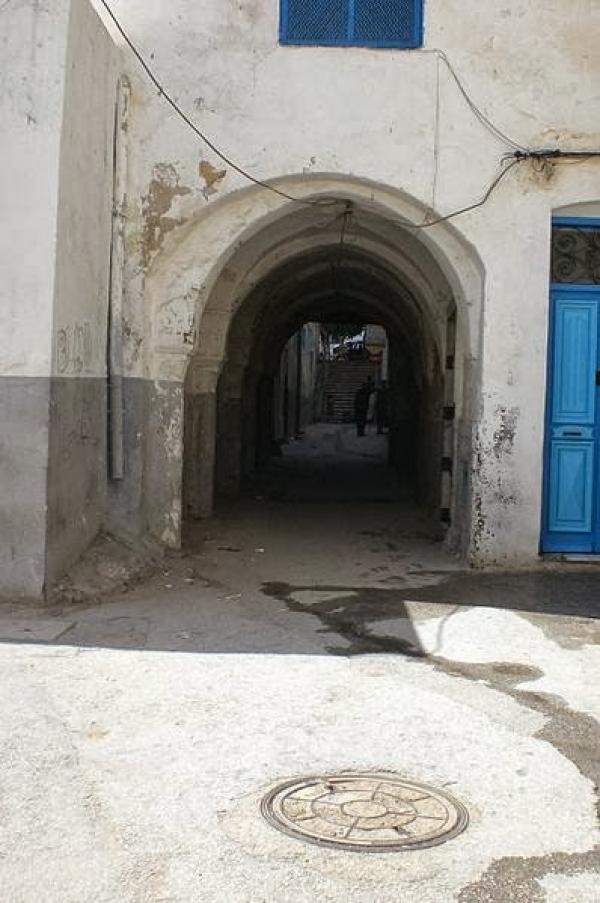Sabbat Ez-Zalam
This is an alley that connects between Bab Banat St—where the Ministry of Justice, courts and other government institutions like the Ministry of Education and the Ministry of Social Affairs are located—and the old neighbourhood of the city, not far from the Kasbah, the seat of government. The alley is too steep and zigzagging and is characterised by buildings that cover it (and that’s what the word ‘Sabbat’ means) and add to its darkness. Rumours have it that supporters of Bourguiba used this place during the first years after independence to torture and interrogate their Yusufid opponents opposed to Bourguiba’s agreements with France. The Tunisian people may have received news about great atrocities perpetrated in this place by gangs that called themselves ‘Care Committees’, whose leaders’ identity was known to all, but what really happened here, even, perhaps, the killings, still lack proper evidence and confessions. However, Tunisians seem to be collectively convinced that the ‘Sabbat Ez-Zalam’ is indeed among the most prominent sites of conscience for the period immediately following independence.
Prominent historians are now trying to reveal the facts associated with this site. The natural factors have also contributed to creating further concerns about it where landslides appear to have revealed shops and rooms that were hidden and buried. Yet the authorities continue to block information about ‘Sabbat Ez-Zalam’ in an attempt to turn people’s attention away from it. The for example blocked the alley and denied people’s access to it on the pretext of preventing further landslides and collapses.
